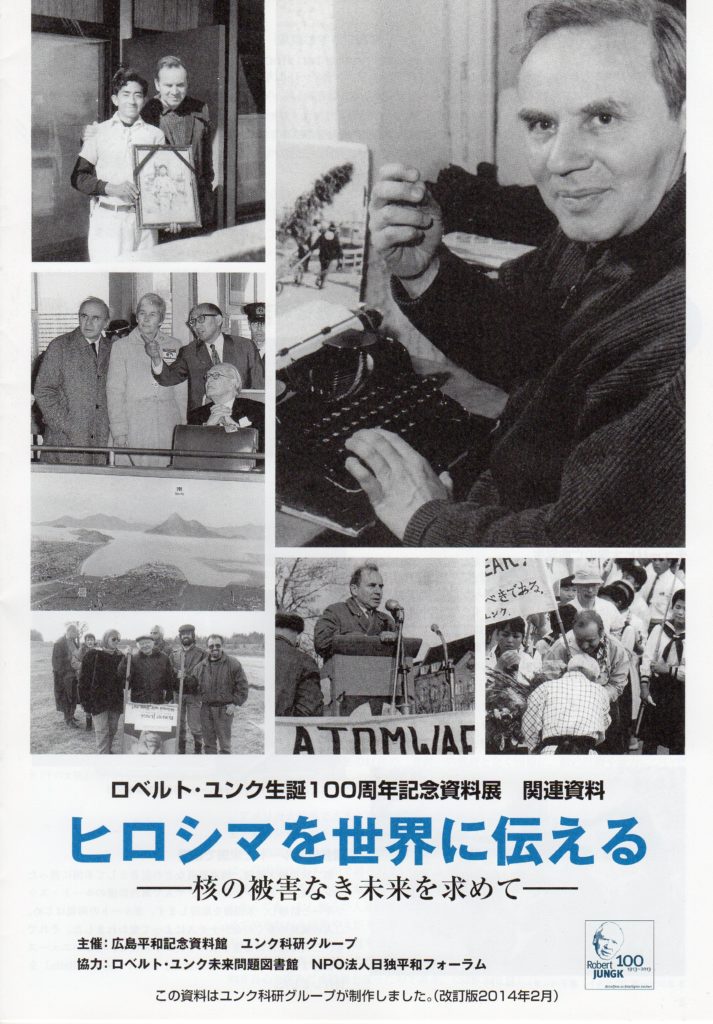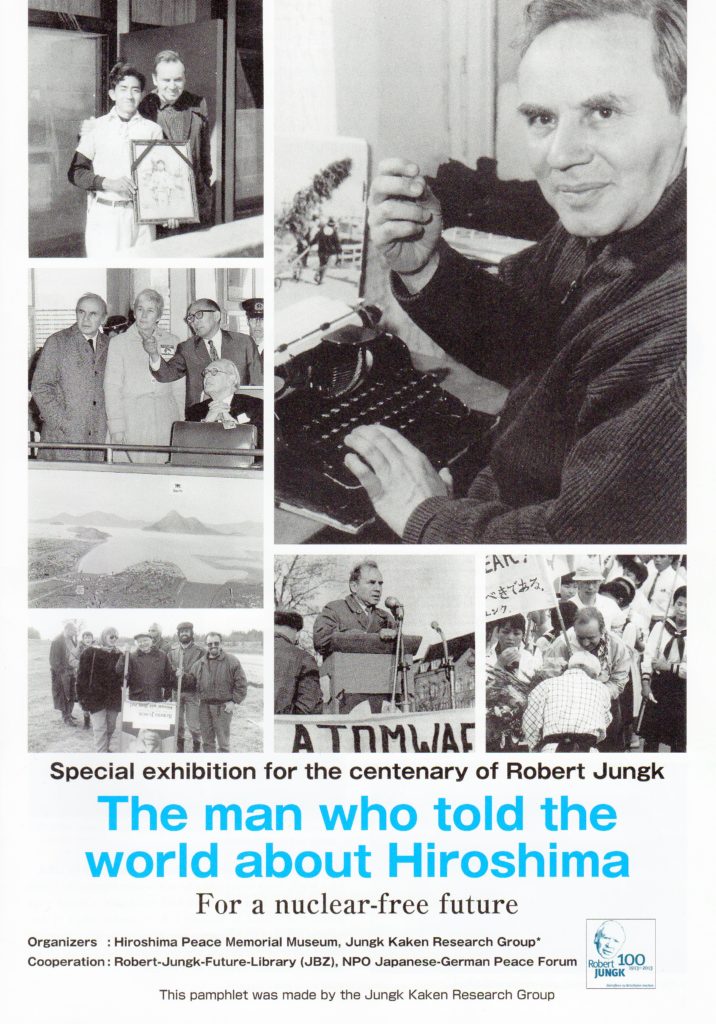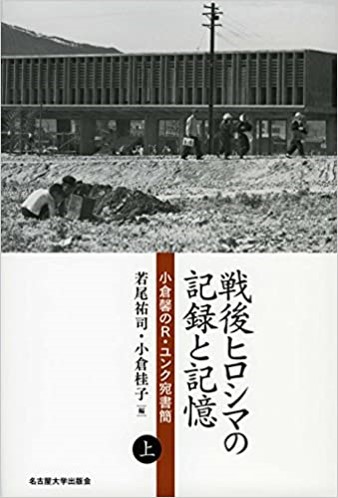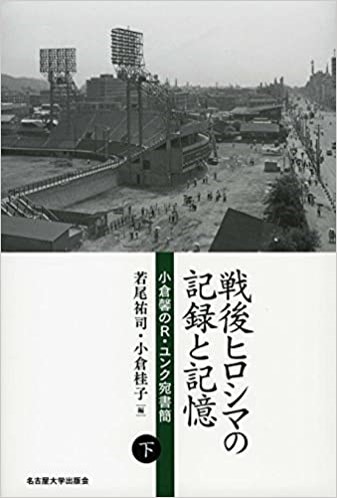竹本 真希子(准教授)
「ヒロシマ」の名は今では世界的に知られていますが、広島の被爆の情報が第二次世界大戦後の世界にどのように伝わり、受け止められていったかについては、アメリカの例を除けば、まだそれほど知られていないようです。そのためヨーロッパへのヒロシマ情報の伝播を知るための例として、広島とドイツ語圏の平和運動との関係を中心に、ヒロシマを世界に伝えた人びとの歴史を追っています。これまで、とくにロベルト・ユンクと小倉馨という二人の人物を取り上げてきました。ユンクは原爆開発計画を扱った『千の太陽よりも明るく』などの著作で知られたドイツ出身のジャーナリストで、小倉はのちに広島平和記念資料館の館長や広島市渉外課長を務めました。原爆が使われた最初の地である広島を訪れたいと1957年に初来日したユンクは、小倉の協力のもと、当時の広島の主要な人物や多くの被爆者にインタビューをしました。そして、ユンクがヨーロッパに帰ったのちに小倉が広島から送り続けた資料も用いながら、1959年に著書『灰墟の光』を出版します。同書は復興期のヒロシマを世界に伝え、佐々木禎子さんと折鶴の物語を広めるきっかけを作りました。ユンクはこののちヨーロッパの反核運動で主導的な役割を担い、1977年に『原子力帝国』を出版、反原発運動にも尽力します。
こうしたユンクと小倉の交流や両者が世界に伝えたヒロシマに関する共同研究を、科研費研究課題「グローバル・ヒストリーとしての平和研究にむけて――アウシュヴィッツとヒロシマの記憶」(2011~13年、研究代表者:竹本真希子、基盤研究(B)、23320161)と題して行いました。本研究プロジェクトでは、他大学のドイツ史研究者とともに広島を含めた日本でのユンクの足取りを追い、この成果をもとに2013年に広島平和記念資料館で特別展示「ロベルト・ユンク生誕100周年記念 ヒロシマを世界に伝える――核の被害なき未来を求めて」を開催しました。さらにこの展示をもとに、2016年まで京都、東京、静岡、福島など各地でユンクに関する展示を行いました。科研費の研究期間終了後もユンクと小倉に関する研究は続いています。『灰墟の光』出版のもととなった小倉によるユンク宛て英文書簡を、若尾祐司・小倉桂子(編)『戦後ヒロシマの記録と記憶』(上・下、名古屋大学出版会、2018年)として翻訳出版し、そのうち第3編を担当しました。
ヒロシマ・ナガサキは第二次世界大戦後の世界の平和運動のあり方を変えました。ヒロシマ情報の伝播を知ることは、世界で核に対する意識がどのように形成されていったかを知るための材料であると同時に、ヒロシマがどのように世界に伝わったのか、そしてヒロシマのどの点が伝わっていないのかについて知ることにもつながります。これまで扱われてこなかった人物や史料のさらなる発掘・発見によって、広島にいる私たちが被爆の歴史を捉えるための新たな視点を提供できればと思います。

ユンク展パンフレット表紙 
Pamphlet of Jungk exhibition 
『戦後ヒロシマの記録と記憶 上』 
『戦後ヒロシマの記憶と記憶 下』
People who spread Hiroshima to the world
TAKEMOTO, Makiko (Associate Professor)
The name of “Hiroshima” is known throughout the world, however, except for the case of the United States, how the information about Hiroshima was spread and accepted after 1945 is still not well understood. In order to fill that gap, my research deals with the people who explained to the world about Hiroshima, their history and the relationship between German peace movements and Hiroshima. The focus of my research is on the German and Austrian Journalist Robert Jungk and Kaoru Ogura, a former director of the Hiroshima Peace Museum. Jungk brought Hiroshima to the attention of the world with his book, Children of the Ashes in 1959, with Ogura’s help. He became one of the leaders of the European anti-nuclear weapon movements and the later anti-nuclear power plant movements in the 1980s.
Based on the results of research on Jungk and Ogura which were conducted as a joint project with some historians outside of HPI, a special exhibition on Jungk was held at Hiroshima Peace Memorial Museum in 2013. It was also held in Kyoto, Tokyo, Shizuoka and Fukushima. Following the research and the exhibitions, Kaoru Ogura’s letters to Jungk were translated from English into Japanese as a book, Sengo Hiroshima no kiroku to kioku. Ogura Kaoru no R. Yunku ate shokan [Memories and documents of Hiroshima in the Postwar Era: Letters from Kaoru Ogura to R. Jungk] (Yuji Wakao / Keiko Ogura ed., Nagoya: Nagoya Daigaku Shuppankai, 2 Volumes, 2018).
